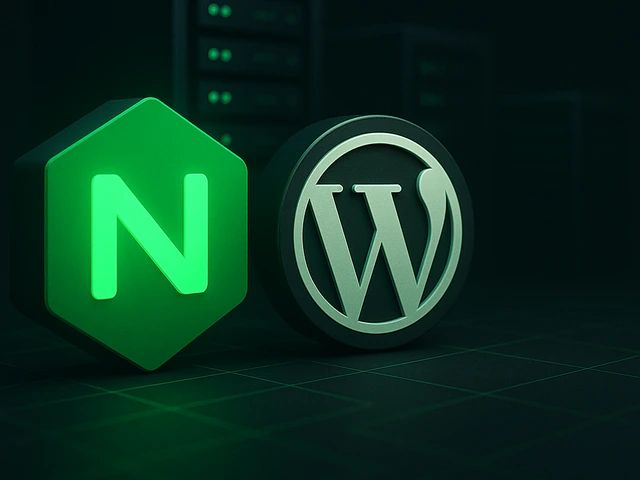
Every year the number of hosting clients grows exponentially, and the most popular hosting service is the rental of a Virtual Private Server or VPS. VPS hosting...
3v-Hosting Blog
8 min read
Artificial intelligence has quickly moved from research labs into the toolkit of almost every developer, marketer, and entrepreneur. What was once the privilege of large corporations with huge GPU clusters is now accessible to anyone with some technical background and a decent server. But “running your own AI model” is a broad phrase that hides a lot of details. What does it take to actually host an AI model locally, without relying on cloud APIs? Let’s break this down step by step, looking at the technical, economic, and organizational aspects.
Cloud services like OpenAI, Anthropic, or Google Vertex AI give immediate access to powerful models, but they come at a cost: data leaves your environment, you depend on the provider’s pricing model, and you’re limited by API quotas. Hosting your own model locally means control - over performance, costs, data privacy, and availability.
Think of it like running a web server. You can pay someone else for managed hosting, or you can rent your own VPS and tune Nginx to your liking. Both approaches have value, but self-hosting gives you flexibility and ownership. The same logic applies to AI models.
The first barrier to entry is hardware. Modern large language models (LLMs) and diffusion-based image generators are demanding. A single 7B parameter model might run on a laptop with 16 GB RAM and a decent GPU, but once you scale up to 13B or 70B models, you’re looking at servers with serious GPUs such as NVIDIA A100 or H100, or at least consumer-grade RTX 4090 cards.
For smaller projects, hosting on a VPS or Dedicated Server with GPU passthrough is often the most practical entry point. Many hosting providers now offer specialized GPU servers where you can run inference without investing in expensive hardware. Just as with Dockerized apps or Kubernetes pods, scaling up later becomes a matter of adding more nodes.
Hosting an AI model is not just about downloading a file and running it. You need a proper stack:
Model weights - for example, LLaMA, Mistral, or Stable Diffusion.
Frameworks - PyTorch, TensorFlow, or JAX.
Optimization libraries - tools like bitsandbytes or DeepSpeed to make models run efficiently on your hardware.
Serving layer - something like Hugging Face’s transformers pipeline, TensorRT Inference Server, or vLLM, which exposes the model through an API.
It’s comparable to running a database. You don’t just install PostgreSQL binaries; you configure users, optimize indexes, and expose endpoints. With AI models, you’ll need to set up API routes, integrate authentication, and ensure concurrency so multiple requests can be handled at once.
How you deploy depends on your goals. Developers experimenting on a single workstation may run everything directly in a Python environment. But if you’re thinking about production, containerization is your friend.
- Docker makes packaging dependencies easier, especially when GPU drivers are involved.
- Kubernetes is a logical choice if you plan to scale across multiple nodes. It allows you to schedule GPU workloads, manage horizontal autoscaling, and integrate monitoring with Prometheus and Grafana.
In practice, many small teams start with Docker Compose on a single server and only move to Kubernetes once real traffic demands it. The important thing is to avoid creating a “pet server” that only one person understands. Treat your AI stack like any microservice: reproducible, documented, and automated.
Running models locally means you pay for hardware directly. That can feel expensive, but it also gives predictability. Instead of being surprised by a $500 cloud bill after an experiment, you can budget a fixed amount for GPU rental or server purchase.
There’s also the matter of energy use. GPUs draw a lot of power, and inefficient setups can become heat generators. Many teams adopt quantized models - versions compressed to 4-bit or 8-bit precision - which dramatically reduce requirements. Just as DevOps engineers tune Linux kernels for performance, AI practitioners tune their models for efficiency.
One of the strongest arguments for local hosting is compliance. If your business handles sensitive customer data, sending it to a third-party API is risky. With a local deployment, everything stays within your infrastructure. This is particularly important for healthcare, finance, or government-related projects, where regulations are strict.
A practical example: a European startup used Dockerized local models to comply with GDPR rules. Instead of sending personal data across the Atlantic, they kept everything inside their Frankfurt data center. It’s the digital equivalent of owning your safe instead of renting a locker overseas.
Hosting a model is only half the story. You also need to connect it to real business processes. That might mean:
- Exposing an internal REST API for your development team.
- Integrating with customer-facing apps via gRPC or WebSockets.
- Using Redis or Kafka as middleware for handling high-volume requests.
For instance, a SaaS platform can deploy a text generation model locally and connect it with a Django backend. Requests go through the API, responses are cached in Redis, and monitoring dashboards track latency. From the user’s perspective, it’s seamless. Under the hood, it’s a mix of infrastructure best practices and AI-specific optimization.
It’s tempting to think that self-hosting is just about downloading some GitHub repo. In reality, the hardest parts are operational:
Updates: models evolve quickly, and new checkpoints arrive every month.
Monitoring: you’ll need observability just like for databases or web apps.
Scaling: concurrency can overwhelm a single GPU if you underestimate demand.
That said, none of this is unsolvable. Many DevOps practices you already know - CI/CD pipelines, infrastructure as code with Ansible or Terraform, load testing - apply here as well. Hosting AI is not a completely alien task; it’s simply another type of workload.
The ecosystem is maturing rapidly. Open-source projects like Ollama, vLLM, and LM Studio are making it easier to spin up models on consumer hardware. Expect this trend to continue, with more pre-built containers, Helm charts, and turnkey solutions from hosting providers.
In the same way that WordPress made it trivial to publish blogs, we’re heading toward a point where hosting an AI model could be as simple as running docker run ai-server. But until then, the professionals who understand how to configure GPUs, patch Linux kernels, and balance Kubernetes nodes will have a significant edge.
Self-hosting AI models is both empowering and demanding. You gain control, privacy, and flexibility, but you also inherit the responsibility for hardware, updates, and reliability. For IT specialists, entrepreneurs, and tech enthusiasts, this is an exciting frontier. It combines the rigor of system administration with the creativity of machine learning.
If you’ve ever deployed a CMS, tuned a Kubernetes cluster, or set up a Dockerized microservice, you already know most of the skills required. The difference is that now the “application” you’re hosting isn’t a website or a database - it’s intelligence itself. And that’s a challenge worth taking.

A practical introduction to grep for Linux: how the command works, which flags you really need, common mistakes, and real-world scenarios for using grep in admi...

Learn how IP addresses work: IPv4 vs IPv6, public and private IPs, DNS resolution, routing, security basics, and how IPs are used in real server and cloud infra...

Accelerating WordPress at the Nginx level: correct PHP-FPM settings, try_files, static files, caching, Brotli, wp-login protection, and secure headers for stabl...